Invasive Plant Species of Recreational Zones of Kharkiv (Ukraine) †
Abstract
:1. Introduction
2. Materials and Methods
3. Results and Discussion
4. Conclusions
Author Contributions
Funding
Institutional Review Board Statement
Informed Consent Statement
Data Availability Statement
Conflicts of Interest
References
- Burda, R.I.; Protopopova, V.V.; Fedoronchuk, M.M.; Shevera, M.V. Synanthropization flora and vegetation—A threat to biodiversity. Visn. Nac. Acad. Nauk Ukr. 2013, 2, 77–80. (In Ukrainian) [Google Scholar]
- Mil’kov, F.N. Man-Made Landscapes. A Story about Anthropogenic Complexes; Mysl’: Moscow, Russia, 1978; pp. 54–56. (In Russian) [Google Scholar]
- Tolmachev, A.I. Introduction to the Geography Plants; Leningrad University Publishing House: Leningrad, Russia, 1974; 244p. (In Russian) [Google Scholar]
- Raunkiaer, C. The Life Form of Plants and Statistical Plant Geography; Claredon: Oxford, UK, 1934; 632p. [Google Scholar]
- Hennekens, S. Turboveg for Windows 1998–2012. Version 2. 2012. 78p. Available online: https://ibot.sav.sk/cdf/tvwin.pdf (accessed on 21 October 2021).
- Tichý, L.; Holt, J. JUICE: Program for Management Analysis and Classification of Ecological Data: Program Manual; Vegetation Science Group: Brno, Czech Republic, 2006; 98p. [Google Scholar]
- Dubyna, D.V.; Dziuba, T.P.; Iemelianova, S.M.; Bagrikova, N.O.; Borysova, O.V.; Borsukevych, L.M.; Vynokurov, D.S.; Hapon, S.V.; Gapon, Y.V.; Davydov, D.A.; et al. Prodrome of the Vegetation of Ukraine; Nauk. Dumka: Kyiv, Ukraine, 2019; 784p. (In Ukrainian) [Google Scholar]
- Didukh, Y.P. The Ecological Scales for the Species of Ukrainian Flora and Their Use in Synphytoindication; Phytosociocentre: Kyiv, Ukraine, 2011; 176p. [Google Scholar]
- Zviahintseva, K.O.; Kazarinova, H.O.; Gamulya, Y.G. Invasive plant species of Kharkiv region: Characteristics and conditions of existence, Synanthropization of the vegetation cover of Ukraine. In Proceedings of the III All-Ukrainian Scientific Conference, Kiev, Ukraine, 26–27 September 2019; Book of Scientific Articles; Nash Format: Kyiv, Ukraine, 2019; pp. 69–73. (In Ukrainian). [Google Scholar]
- Protopopova, V.V. Synanthropic Flora of Ukraine and Ways of Its Development; Nauk. Dumka: Kyiv, Ukraine, 1991; p. 204. (In Ukrainian) [Google Scholar]
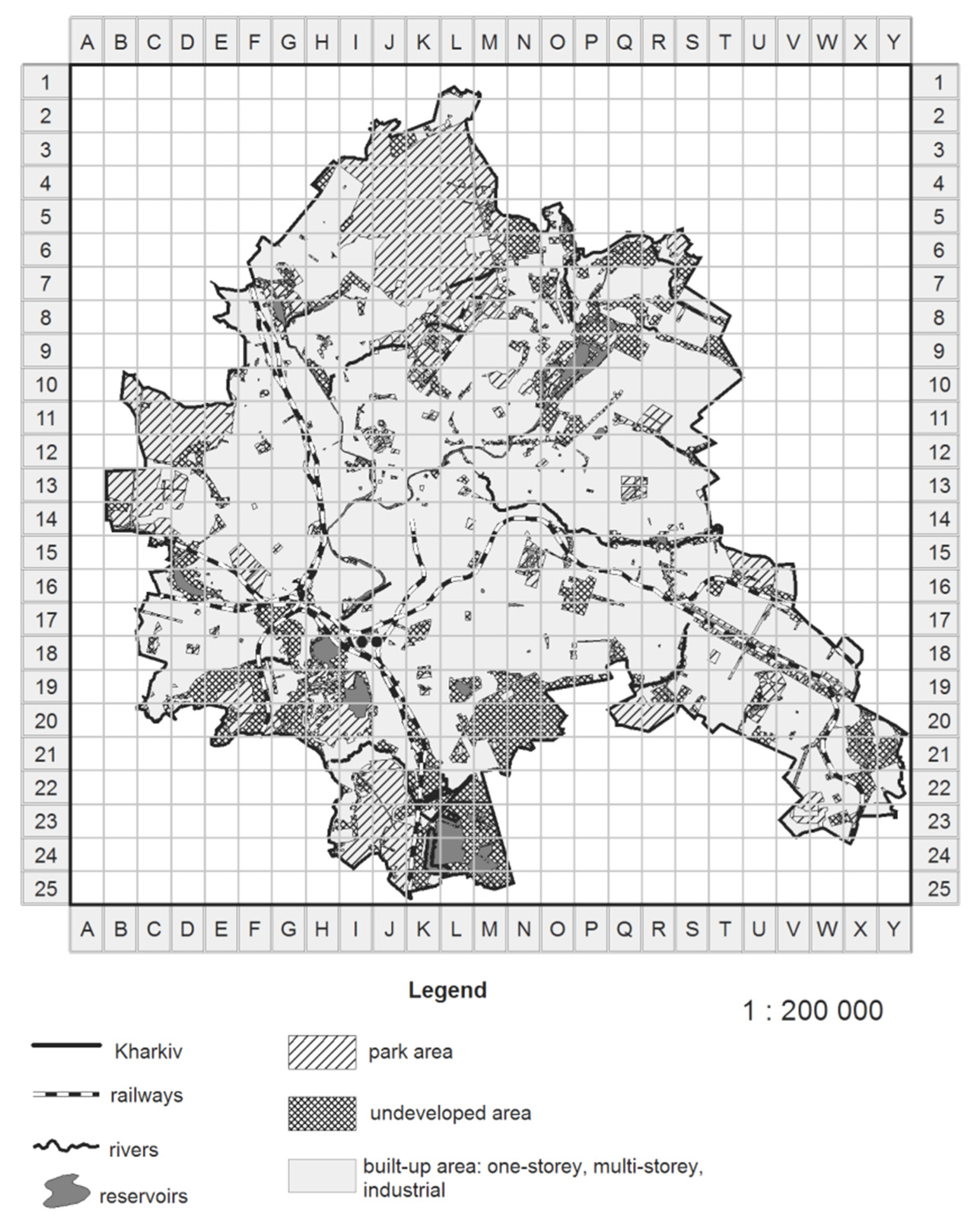
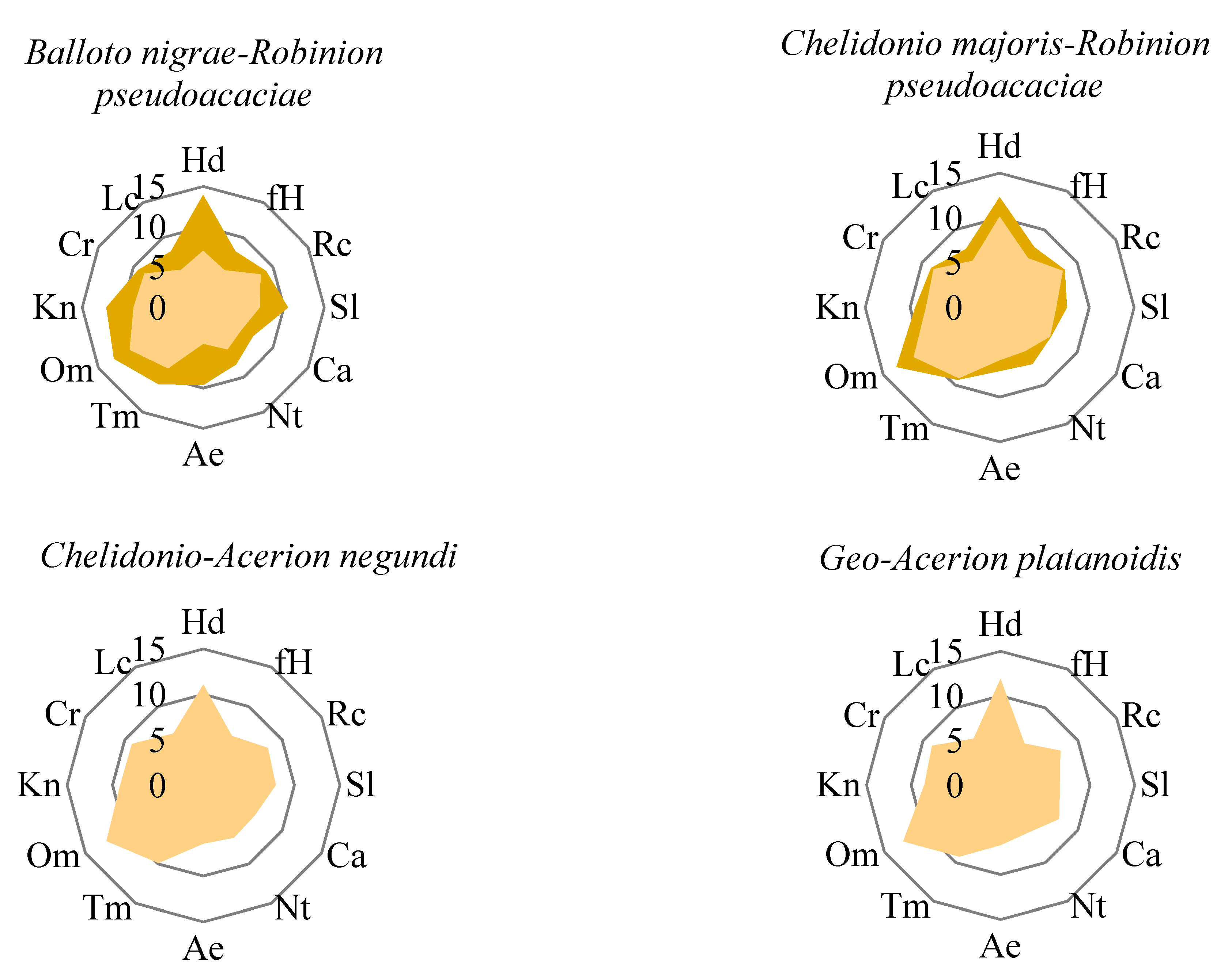
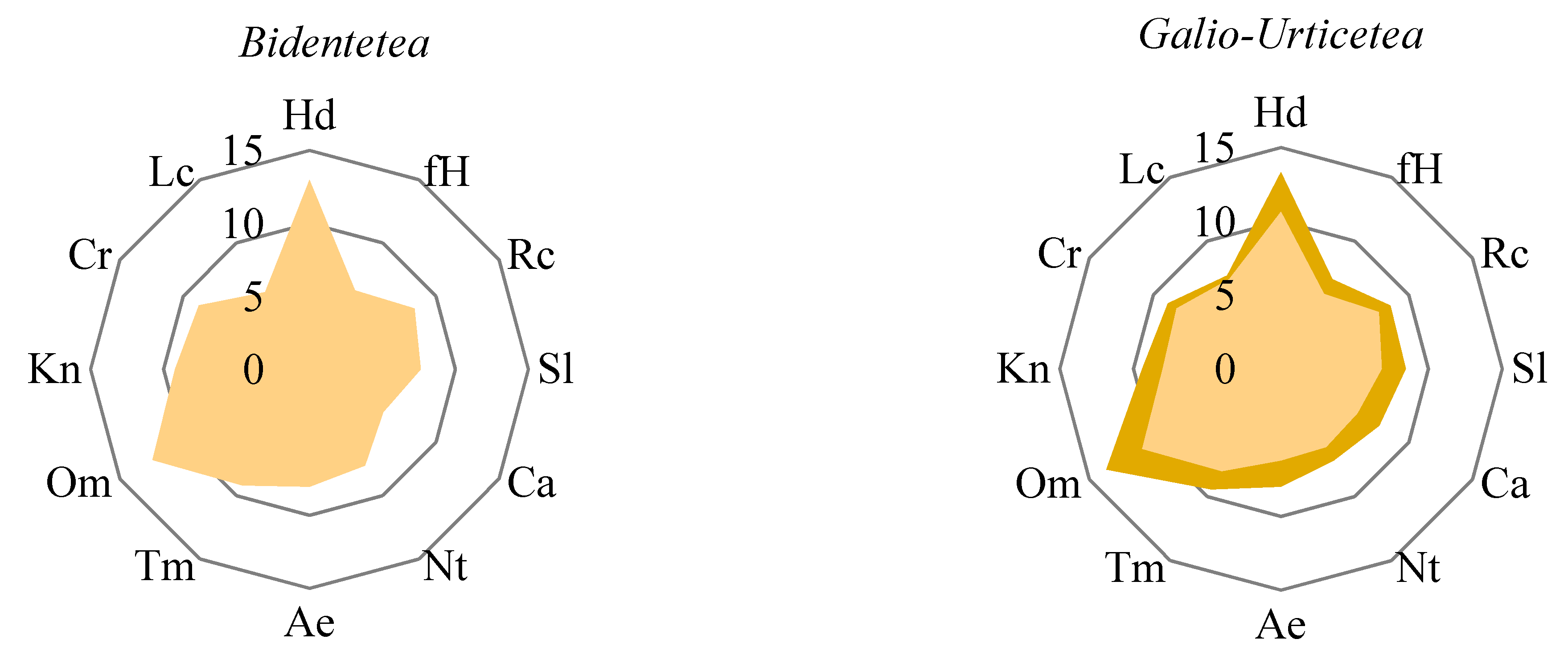
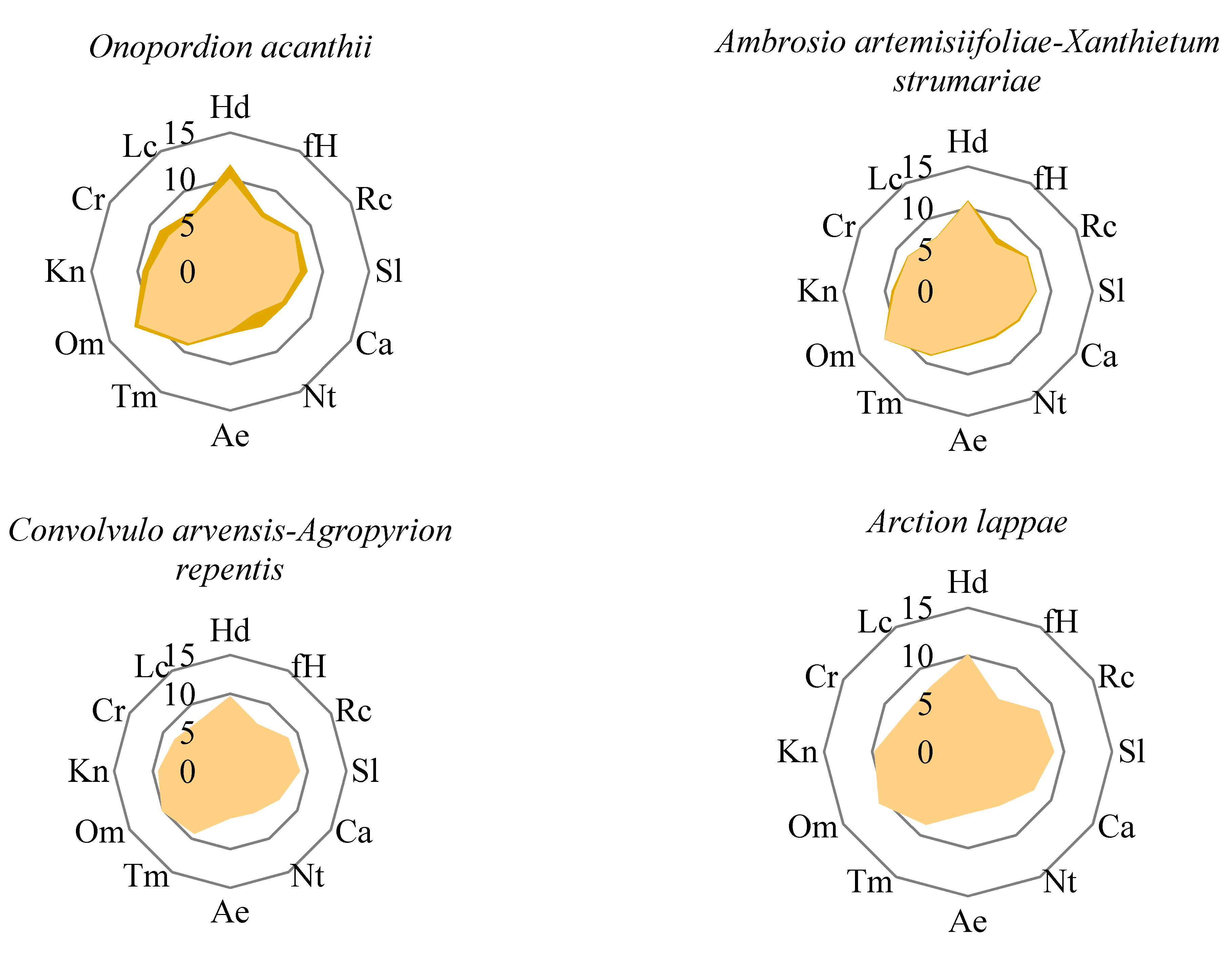
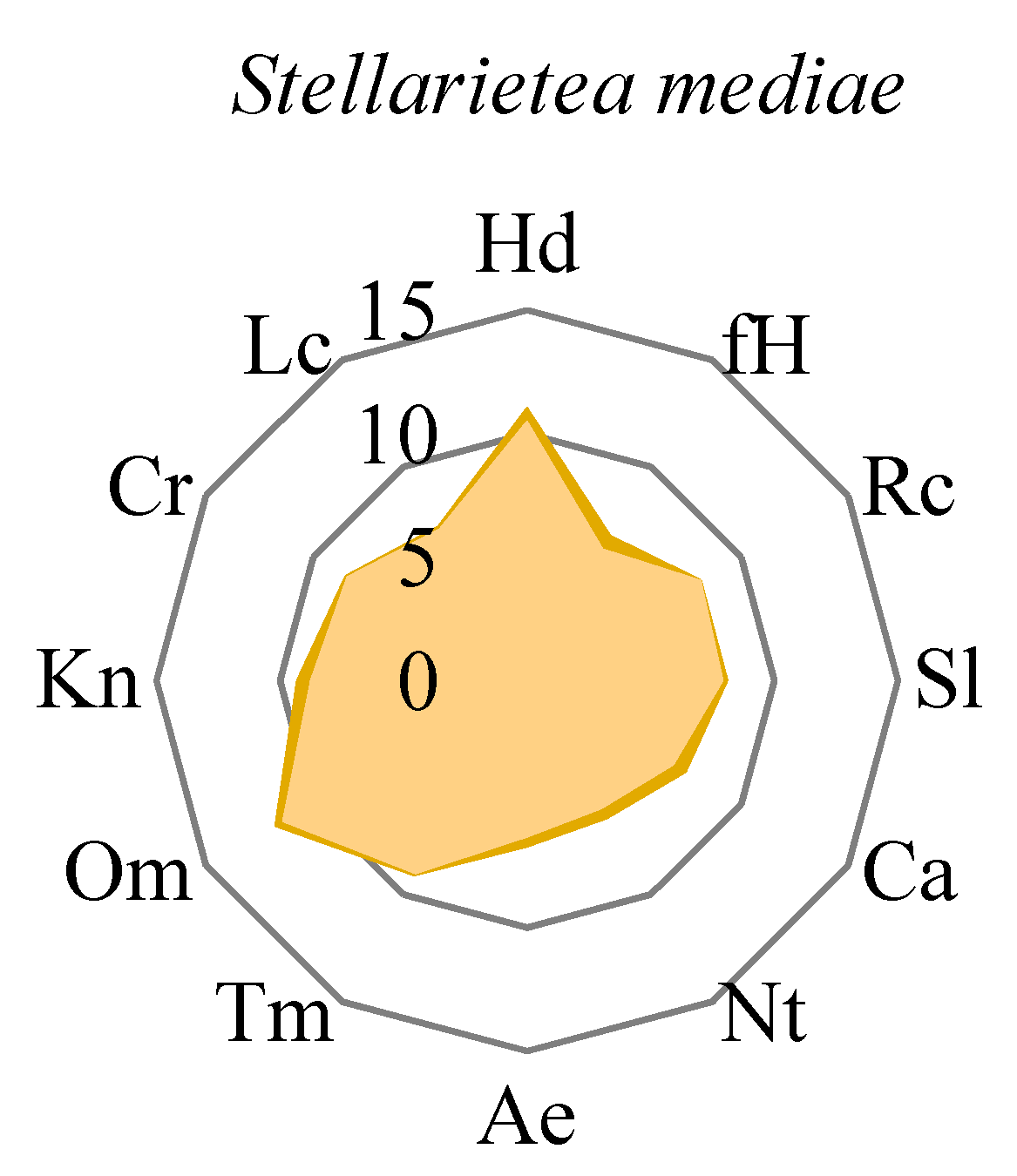
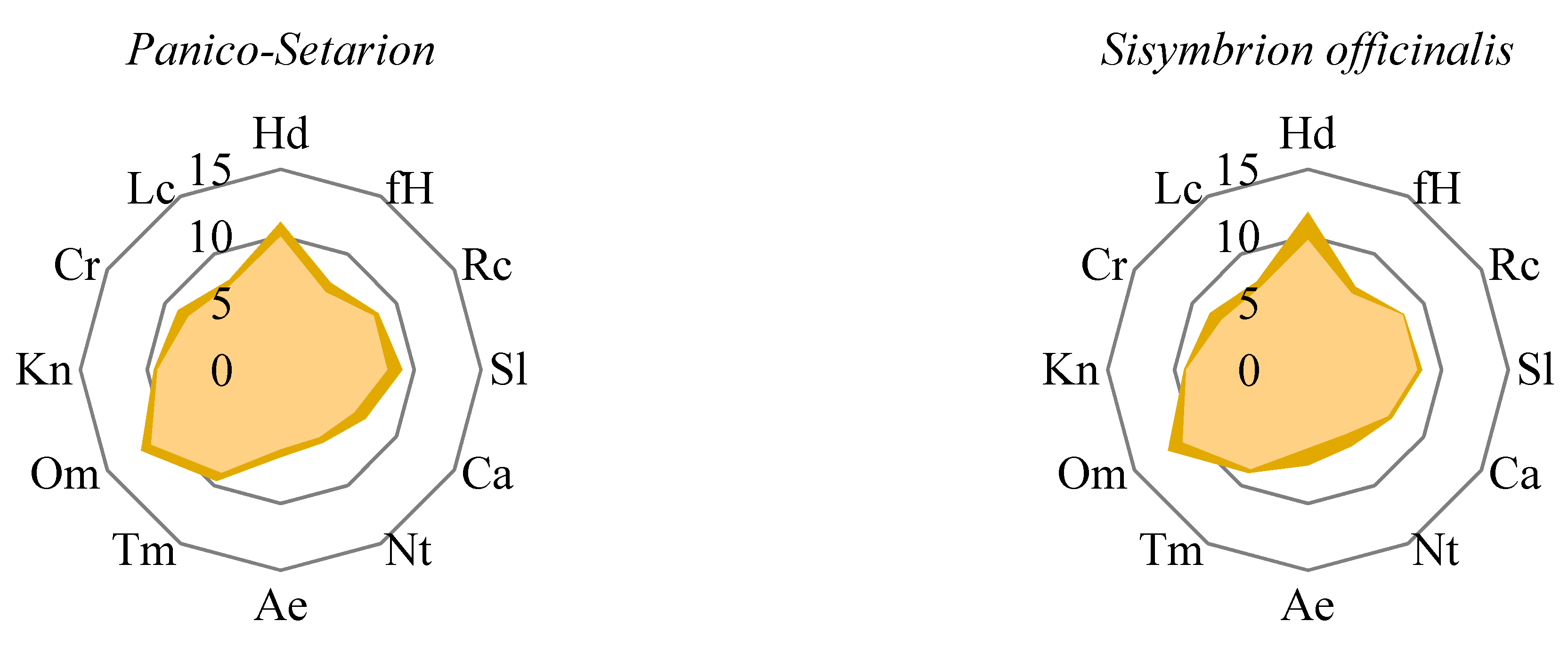
Publisher’s Note: MDPI stays neutral with regard to jurisdictional claims in published maps and institutional affiliations. |
© 2021 by the authors. Licensee MDPI, Basel, Switzerland. This article is an open access article distributed under the terms and conditions of the Creative Commons Attribution (CC BY) license (https://creativecommons.org/licenses/by/4.0/).
Share and Cite
Kazarinova, H.; Zviahintseva, K. Invasive Plant Species of Recreational Zones of Kharkiv (Ukraine). Biol. Life Sci. Forum 2021, 2, 16. https://doi.org/10.3390/BDEE2021-09472
Kazarinova H, Zviahintseva K. Invasive Plant Species of Recreational Zones of Kharkiv (Ukraine). Biology and Life Sciences Forum. 2021; 2(1):16. https://doi.org/10.3390/BDEE2021-09472
Chicago/Turabian StyleKazarinova, Hanna, and Karina Zviahintseva. 2021. "Invasive Plant Species of Recreational Zones of Kharkiv (Ukraine)" Biology and Life Sciences Forum 2, no. 1: 16. https://doi.org/10.3390/BDEE2021-09472
APA StyleKazarinova, H., & Zviahintseva, K. (2021). Invasive Plant Species of Recreational Zones of Kharkiv (Ukraine). Biology and Life Sciences Forum, 2(1), 16. https://doi.org/10.3390/BDEE2021-09472





